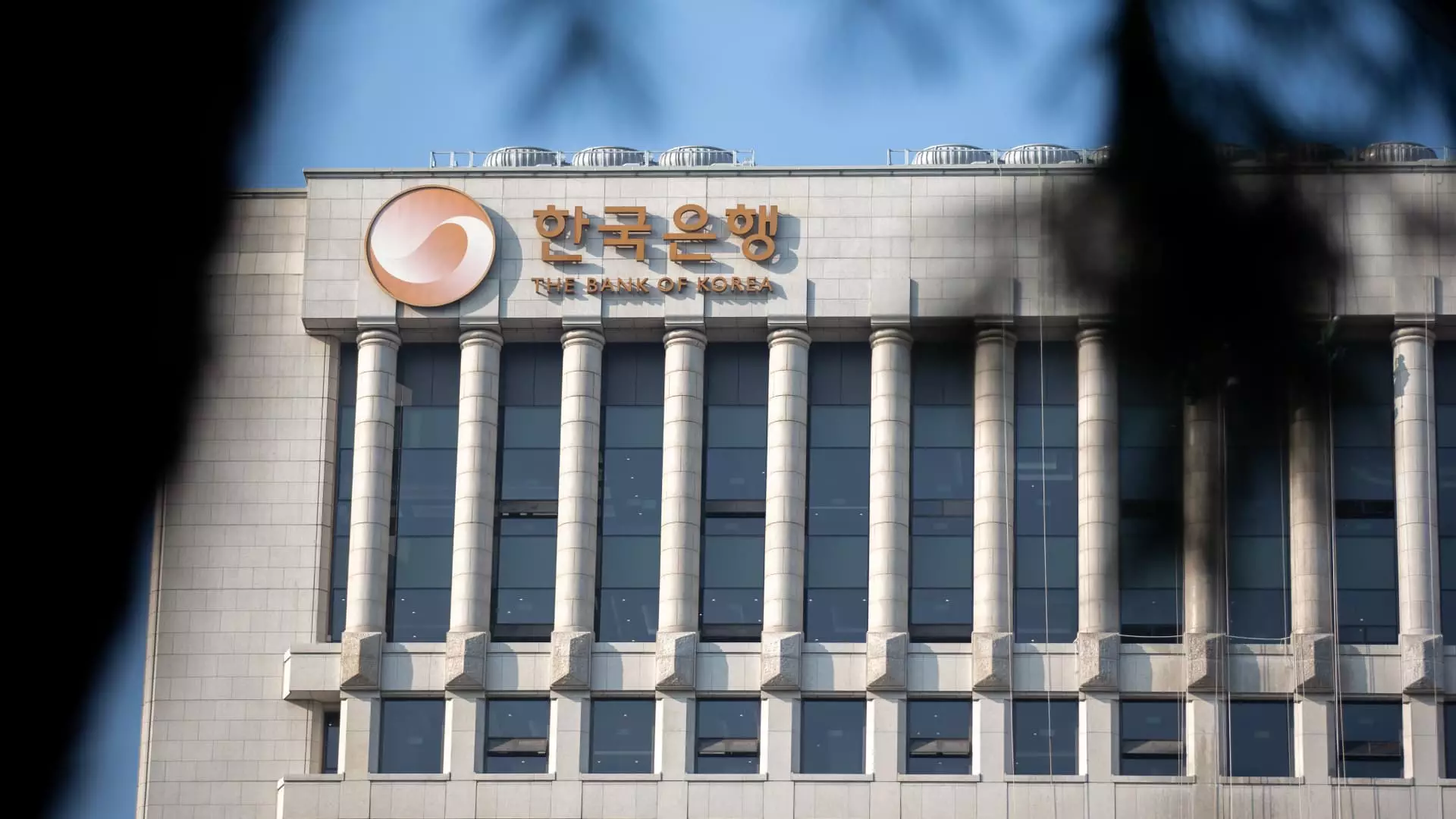In a striking move that underscores the fragility of South Korea’s economic landscape, the Bank of Korea (BOK) has opted to reduce its policy interest rate by 25 basis points, bringing it down to 2.5%. This decision marks the central bank’s fourth rate cut in merely six meetings and aligns with the predictions made by various economists. However, this isn’t just an economic maneuver; it is a direct response to a series of political headaches that have gripped the nation. With the aftermath of former President Yoon Suk Yeol’s controversial martial law proposal still lingering, the BOK is navigating through murky waters marked by both local and international pressures.
The interplay between economic policy and political instability is crucial, especially when confronting external factors like the sweeping tariffs imposed by the Trump administration. Such tariffs, albeit temporarily suspended, have left a mark on trade negotiations, igniting a pressing urgency for a resolution before the July 8 deadline. Yet, the South Korean minister for trade and industry has expressed concerns regarding the feasibility of meeting this timeline, largely due to the impending presidential election on June 3. The unexpected impeachment of Yoon further complicates an already teetering balance between political deliberation and economic action.
Economic Contraction: A Troubling Reality
The economic indicators paint a bleak picture, emphasized recently by South Korea’s surprising GDP contraction of 0.1% in the first quarter. This stark reality is not just a trend but a wake-up call that reiterates the vulnerabilities within South Korea’s economic framework. While the BOK’s decision to cut rates aims to stave off further decline, the move may ultimately serve as a stopgap rather than a sustainable solution. The hopes for a revitalized economy could hinge on the ability of the next administration to provide effective fiscal stimulus. However, throughout this tumultuous political landscape, there is an intuition that any short-term fixes might be overshadowed by systemic issues that require long-term strategic planning.
Even with optimistic forecasts from economic analysts, like Gareth Leather from Capital Economics, who foresee an uptick in consumer spending following the new presidency, skepticism lingers. Will the anticipated boost be substantial enough to counterbalance the sluggishness in the property market and the ongoing disruptions in exports? Projections that slot the full-year GDP growth at a meager 0.5% suggest that much remains to be desired.
Tariffs and Trade: The Unresolved Conflict
As global trade dynamics continuously shift, the toll taken by the Trump administration’s tariffs remains an unresolved issue that fundamentally threatens South Korea’s exporting sector. While the temporary suspension of these tariffs offers a momentary reprieve, such uncertainty in trade agreements can only sow seeds of doubt among businesses and investors. It is a vicious cycle: as domestic confidence wanes, the fabric of economic growth also deteriorates. Without a robust and cohesive strategy to address such trade hurdles, the economic outlook could remain clouded well into the future.
Simultaneously, this tariff saga intertwines with pressing domestic needs, where urgency for political action coincides with economic imperatives. The collective anxiety over tariffs, inflation, and international relations is palpable. With each passing day leading up to the presidential elections, the economic anxieties intensify—an intricate dance where every political decision echoes down the corridors of trade and finance.
The Stock Market Response: Mixed Signals
In the immediate aftermath of the rate cut announcement, the Kospi stock index saw a slight upturn of 1.25%, providing a glimmer of positive sentiment amid broader concerns. However, the decline of the South Korean won by 0.71% against the U.S. dollar highlights a market that is still in flux, responding to both domestic policies and external pressures. This volatility indicates that investors are caught between hope and anxiety; while the rate cuts may provide some temporary relief, the underlying vulnerabilities lead to doubt regarding long-term stability.
The connection between interest rate-setting and stock market performance is fraught with tension; thus, it is pivotal for South Korean leaders to navigate this situation with precision. Failure to do so may lead to diminished investor confidence, further deepening economic malaise. Economic leaders must strike a balance between stimulating growth through monetary policy while managing the difficulties posed by political and international trade challenges.
As South Korea stands on the precipice of change, it is key to recognize the intertwined fates of politics and economics. The coming weeks and months will not only determine the next leadership but will also set the tone for a precarious economic future.


Leave a Reply